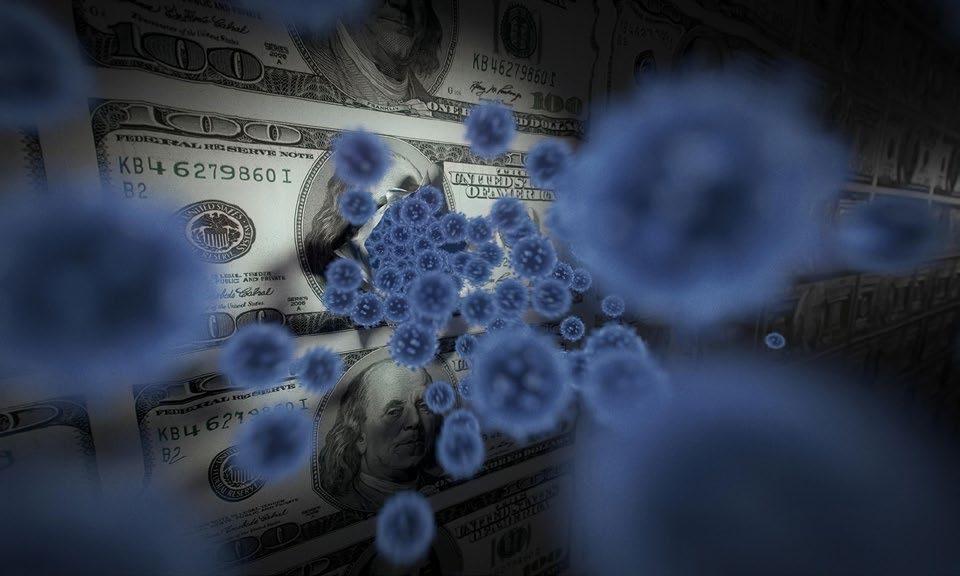
20 minute read
SIIA’S 2022 CAPTIVE SURVEY UNVEILS INDUSTRY
SIIA’S 2022 CAPTIVE SURVEY
UNVEILS INDUSTRY BENCHMARKING DATA
Written By Laura Carabello
BBased upon wide receptivity to the inaugural survey among its captive insurance industry participants, SIIA has again collected key information about the state of the industry for 2022. This year’s survey reflects the ongoing and increased advocacy activities by SIIA, guidance from its Captive Insurance Committee and emphasizes its efforts to support captive professionals with information and data sharing across the industry. New this year is a survey section specifically related to issues for captive owners.
These results were released as part of SIIA’s 2022 National Conference, and discussed in detail at a special session highlighting trends and forecasts.
Ryan Work, senior vice president, Government Relations, SIIA who oversees survey activities and accompanying analyses, says, “As a growth industry where survey respondents anticipate a positive year ahead, captives remain tasked with remaining vigilant and responsive to ongoing changes and pressures to act proactively on behalf of the industry as a whole. This Survey is a pulse for the industry, level-sets the marketplace and provides a ‘GPS’ to help SIIA members plan for the future.” The topics presented and survey results provide readers with a general understanding of the state of the captive industry as well as valuable planning opportunities.
John R. Capasso, CPA, CGMA, PFS, president & CEO, Captive Planning Associates, LLC, says “SIIA’s 2022 Captive Survey & Trend Report is loaded with data and insights that benefit a variety of captive stakeholders. From a captive manager’s perspective there are topics of particular interest including new captive formations, premium volume, emerging risks, and IRS activities. Key analytics reflect trends in areas such as hiring/staffing, service providers, regulation, investments, and COVID impact.”
The survey points to the importance of engaging competent legal counsel in all stages of captive development and administration, from regulatory compliance and coverage guidance to proper tax treatment and claims administration. Captive owners’ responses reflect this need since experience shows that failure to comply with both state and regulatory guidance, as well as the inability to understand the consequences of certain decisions, may construct new and expensive risks for owners that could weaken the efficiencies and protections that captives afford.
“One noteworthy takeaway is that a majority of respondents advise their clients to obtain an independent legal opinion signifying the increased complexity of captive structures, insurance programs, technology, laws and regulation,” says Capasso. Finally, not to be understated is the role of captive owners and operators. “This most important group is critical to the success of any captive program and the survey analyzes, among other things, motivations for setting up a captive, risk management attitude, and governance practices,” he says.
SURVEY RESULTS
Dozens of captive managers across the industry, representing a diverse set of owners and risks, including medical stop-loss, property & casualty, and producer-owned reinsurance, responded to this year’s SIIA industry survey.
Here are some of the highlights which are more fully examined below:
• Captive formation growth significantly outpaced captive closures, with survey results showing positive signs for the industry. • Sharp increase in the average number of captives under management and reflecting growing confidence in the captive model. • Wide range in the total captive premium amount, raising questions as to why such disparity. • 36% of captives report COVIDrelated claims in the past year and opportunity to assess changes from previous year’s survey. • Average COVID-related claim amount is down which is not surprising given the changes in infection rates. • IRS audits are slightly lower, a thankful difference from the past although still a major concern. • Roughly 40% of respondents have had clients settle with the IRS, a sign of the times. • 66.7% of respondents report having added staff in the past year– including a significant number of legal specialists – another signal that captives face an ongoing and significant legal issues.
A more in-depth summary of survey follows in several key areas:
1. Current State of the Captive Market 2. Industry trends 3. Captive Arrangement / Structures 4. COVID Impact 5. IRS Activities
1.STATE OF CAPTIVE MARKET
Prior to reviewing the results, it is helpful to understand the composition of survey respondents and some of the key characteristic differences: nearly half are Captive Managers, with the remainder split evenly between captive owners and other titles followed by a small percentage of captive attorneys. “The role of captive owners and operators is not to be understated,” notes Capasso. “This most important group is critical to the success of any captive program and the survey analyzes, among
other things, motivations for setting up a captive, risk management attitude, and governance practices.”
While the largest number of captives managed by a single firm is 1,000, the majority of respondents manage 100 or fewer captives.
There was an incredibly wide range in reported total captive premium amounts from respondents – the lowest amount was $30,000, while the highest total was over $3,000,000,000. The ability to generate premiums may be directly tied to the captive’s track record for managing risk and success metrics related to other benchmarks, such as litigation experience, IRS audits, healthcare and claims management, marketing and overall financial performance.
Karin Landry, managing partner, Spring Consulting Group, says, She says that organizations with existing captives are using them to fund these additional risks where capacity has left the market and to create unique solutions to solve their needs and the needs of their stakeholders. “For organizations without existing captives, interest is growing as they hear more and learn about the scope of opportunities they can provide,” she explains.
What is surprising and telling is the demonstrated need for increased staffing, indicative of the workload volume, the complexity of the issues and the hardening insurance market. The need for an increased number of legal specialists is evident and may highlight the expanded number of legal issues facing the industry, as noted throughout this analysis.
One sign of the times and reflective increased business consolidation is that newly formed single-parent captives -- ones that are controlled by one parent that insures its own company along with insuring the risks of its affiliates -- were almost equal to group captives formed. The reality of this marketplace is that the majority of captive closures were in the group captives and single-parent captive space.
Leading the captive premium/unit count growth at 40.7% was medical stop-loss captives, followed closely by Property and Casualty (insurance), employee benefits and enterprise risk captives. This focus on healthcare is telling since the need for controlling medical costs is becoming a primary concern for US employers: Mercer expects medical plan costs per employee to rise 5.6 percent on average in 2023

while a Willis Towers Watson (WTW) survey of 455 U.S. employers shows that they expect healthcare costs to increase 6% next year, up from the 5% increase they are experiencing this year.
Despite the pressures of a hardening insurance market characterized by higher rates amid the continuing pandemic, increased healthcare costs and other economic factors, a decisive majority of respondents (86.7%) indicated that they are seeing opportunities that are actually driven by market conditions. In difficult markets, captives remain “bullish” as employers seek new methods for managing risk and mitigating the impacts of cyber-attacks or problematic artificial intelligence issues. This highly positive outlook transcends future opportunities for the industry with an overwhelming majority (90%) expressing optimism and confidence.
2.TRENDS
It’s no surprise that economic factors are identified as a pressing risk and likely associated with one word: inflation. Medical inflation poses a significant underlying issue, and according to CMS, US health expenditures are anticipated to grow by 5.4% annually in the upcoming years, reaching an expected USD 6.8 trillion by 2028.
Of course, this is directly related to survey respondents’ concerns about medical insurance and the significant increase in the size and frequency of catastrophic medical claims. It appears that captive owners are seriously rethinking their approach to managing employee healthcare costs, with many factors contributing to risk: removal of annual and lifetime limits in employee-sponsored group health plans through the Affordable Care Act, emergence of complicated lifesaving treatments, extended inpatient stays and skyrocketing costs for specialty drugs as well as new gene and cell therapies.
Landry maintains that insurers are in a tough spot where return on investments are less reliable, claims increase both in severity and frequency and inflation is causing public and regulatory pressure. “The P&C market in Florida is a great example of a perfect storm,” shares Landry. “Despite the lack of a significant hurricane since 2018, dozens of insurers and a few reinsurers have collapsed or left the market altogether due to a number of factors including inflation, regulatory environment, and judicial landscape, leaving the few that remain no other option but to increase premiums by double digits.”
She states that these pressures are causing insurers to increase premiums and reduce capacity, the hallmarks of a hard market. “As such, employers are turning to captives and alternative risk financing vehicles to bridge the gap and create solutions that are either unavailable or unattractive in the commercial space. Additionally, captives are increasingly being used to solve unique challenges in a more efficient manner. Whether it be introducing an innovative and alternative solution to the market or creating a program to finance a parent’s unique risk, captive interest doesn’t seem to be slowing down.”
In addition to these economic factors, it was remarkable to see the impact of cybersecurity threats and artificial intelligence (AI).
The growing prevalence of cyberattacks resonates throughout the industry as ransomware attacks against corporations were up 323% from 2019 through 2021, according to a recent Aon report. In the wake of COVID-19, more employees are working from home, rendering systems and networks more vulnerable. As a result, insurance companies are paying more claims and damages, leading to sharp increases in premium pricing and tighter underwriting.
Captives find themselves positioned as a better option for managing cyber risk, but the survey demonstrates that these risks are far more troubling in the past year as the volume of attacks has increased.
In a related area, the growth in adoption of Artificial intelligence (AI) to remain competitive, improve processes, and increase efficiency has also opened up areas of risk. Captives may encounter risks associated with trust and transparency, ethics, security, and safety, as their AI systems become more complex and cyber threats impact operations.
Evolving regulatory trends are also top of mind, with the IRS continuing to challenge captives of issues related to cryptocurrency, non-filing, syndicated conservation easement and micro-captives. It’s no wonder that captives remain vigilant in light of the June 2022 IRS News Release IR-2022-118, reiterating that it will aggressively pursue litigation to assert tax deficiencies and penalties against taxpayers who participate in what the IRS considers to be abusive microcaptive insurance arrangements.
The survey demonstrates that additional regulatory challenges remain a high priority, particularly compliance requirements related to group capital and digitization requirements heightened by the pandemic. Data security and consumer protection, climate and environmental impacts, digital assets, and the convergence of sector sales are also significant concerns.
When asked in what areas are respondents seeing an increased interest in captive use, clearly, the majority of respondents – 67.9% -- view the use of medical stop-loss as the leading interest point for increased interest. Undoubtedly, they view stoploss as an added layer of protection from catastrophic medical claims, enabling captive owners to enhance their flexibility, decision-making and competitive advantage while saving resources and money.
Survey results support the attitude that stop-loss reduces and stabilizes the overall cost of providing healthcare insurance to employees on a long-term basis, expanding the utility of an existing captive and bringing uncorrelated risk into the existing captive with different payout periods than the captive's existing exposures. Survey responses reflect captive confidence in the value of stop-loss to recognize and deploy surplus more efficiently, offsetting future costs and using the returns to enhance benefits or distribute as dividends.
Captives remain confident in the role of stop-loss to provide more efficient access to the reinsurance marketplace and capabilities that allow captives to better manage volatility, predictability of annual claims and experience less frequent claims.
When queried if they have noticed any trends among service providers, price inflation and staffing shortages emerged as the leading trends. Captives increasingly recognize that not all industries and jobs are impacted in the same way, with astute leaders gaining a better understanding and factoring in the impact of a recession on specific industries, customers and workforces. This includes

implications for sales, production, distribution and hiring to attract the most critical skills and jobs. Captives must balance current needs for available talent and avoid over-correcting in response to talent shortages. Many may be holding firm on salary increases and rethinking their approaches to salary negotiations.
3. CAPTIVE ARRANGEMENT / STRUCTURES
A number of respondents (89.3%) report having less than 50% of their clients insure controlled unaffiliated business, which may indicate the appetite of captives to take risk on behalf of companies that are separate and distinct (relative to ownership) from the captive's parent. Performing somewhat akin to a traditional insurer, captives can participate in third-party insurance programs that are offered to customers, vendors, or other related parties. According to IRMI, many US captive domiciles permit pure (single-parent) captives to write insurance for companies unaffiliated with the captive's parent, as long as the relationship is "controlled" as per the definitions in their captive laws. The significant majority of respondents in the enterprise risk captive space (96.6%) report that they either always or sometimes advise their clients to obtain an independent legal opinion to support regulatory, tax, and compliance matters specific to their proposed insurance program. While the answers depended upon the types of captive structure and risk being mitigated, it is evident that outside legal opinions are highly valued and undoubtedly required in this litigious environment.
Across industries and the country, we’re catering to our clients and their greatest asset —their employees.
Innovative solutions, unparalleled service. That’s the HPI difference.
• Scalable, customized plans • Full suite of a la carte programs • Member advocacy solutions • Numerous network options, including custom-built • Pharmacy benefit integration with all major national PBMs • Ancillary benefit administration • Preferred A-rated reinsurance carrier relationships • Best-in-class RBP options • Captive arrangements In-house teams for seamless support—implementation through renewal
Personalized, high-touch attention
Full-service navigation tools and concierge services
Guided performance analysis and consultation
Average client retention rate of 97% for over 40 years
We love what we do, and we’re grateful during this season of giving to be part of this healthcare community.
hpiTPA.com

As 831(b) captives come under increased scrutiny by the IRS, with some captives receiving warning letters from the IRS, the survey indicates that many respondents with 831(b) structures (54%) are considering converting their captive to an 831(a). This election is largely to increase the premium limit and seek a less volatile solution. Instead of exiting the captive, respondents may view converting the election from an 831(b) to an 831(a) as a simple solution that still yields the benefits of a captive model.
For determining customer premium determinations, a significant percentage of respondents (42.5%) indicated that they rely upon actuaries compared to 22.5% of responses reporting that captive managers conduct the computations based upon formulas. The reliance upon professionals vs. simply formularies reflects the heightened complexity of these determinations accompanied by increased confidence in the expertise of actuaries. The survey touches upon other issues regarding captive pools, with the average percentage (60%) of captives in a pool and most reporting their loss ratio between 1125%, demonstrating solid performance. On average, only 12% of captives loan money to affiliates, although a clear majority of those report loaning 5% or less of assets. These decisions obviously require a great deal of thought and risk assessment.
Amplifying these results, Landry points to the numerous types of captives and alternative risk financing mechanisms, with no two captives alike. “One structure that has increasingly become popular is cell and group captives,” says Landry. “As the hard market applies pressure on small–midsized employers, captives offer an enticing path forward. As captives continue to grow in popularity, more and more people are discovering the potential uses and the benefits they can provide.”
She emphasizes that it is extremely important that employers seeking alternatives to their traditional risk management and financing practices first do their due diligence and find reliable professionals to advise and educate them on the various solutions available to them.
4. COVID IMPACT
While COVID nearly paralyzed the market with business interruptions as opposed to healthcare-related claims as reported in last year’s survey, the majority of respondents this year (51.7%) report captive utilization has increased due to the impact of COVID. While there was a wide range in responses on COVID-related claims being paid, the long tail of COVID and the persistent effects of the pandemic impacted survey results.
Based on current survey responses, the average size of the COVID-related claims is $354,667, with the largest being $1,500,000. These results can be favorably compared to last year’s survey where the average amount paid on COVID-related claims was $650,000, with the highest claim being $2 million.
Offering even broader perspectives, Landry says COVID-19 has had an immense impact on the healthcare and employee benefits spheres, adding, “A range of factors has led to both higher costs in the provision of health and benefit plans as well as an increase in claims costs.”
These factors include: • Direct costs related to COVID-19, such as testing, vaccinations, and treatment • Deferral of care for elective treatments which has dominoed into higher costs and difficulty in securing appointments now • Missed preventative care and lower test numbers in areas such as labs, CT scans, and MRIs, which will make it harder to detect conditions early and could lead to increased severity and a corresponding higher cost of care down the road • Behavioral health issues which rose to crisis levels as a result of the pandemic, impacting productivity, pharmacy costs, and increasing the likelihood of chronic disease. She says that as a result of this difficult climate, captives have never been a more strategic or more timely risk management tool: “A captive arrangement is a strategic way for employers to benefit from selfinsurance while creating a sustainable solution to partner with commercial markets. Captives provide substantial competitive advantages over traditional self-insurance, such as reduced total cost of insurance, insulation from market fluctuations, and protection from cashflow volatility.”
5. IRS ACTIVITIES
On a very positive note, a majority (57.1%) of respondents reported that they did not have any captives undergoing IRS captive campaign audits in the enterprise risk captive space. Perhaps the increase in outside legal or other counsel has helped captives to defend or thwart IRS audits, with some respondents reporting no new captive audits in 2021. Captive managers that are under audit are primarily helping their clients fund their defense or assisting clients or advisors coordinate defense strategies.
This may further support the need for additional legal counsel as reported elsewhere in this analysis, and account for the

large number (40.9%) that reported clients had settled with the IRS or the 70% that indicated that no notice of deficiency had resulted from the audit. Another positive sign is that most respondents (60.0%) report that they have not had any clients receiving no change letters from the IRS.
The average estimated cost of defending a captive came in at $284,938, with the median being $38,750. The largest reported estimated defense cost per captive was $2,000,000, however, most respondents report having less than $100,000 in average defense cost per captive. While captives reported expanded legal support, it appears that the costs may have been commensurate with time invested and positive outcomes.
Going forward, the good news is that a significant majority (81%) of respondents report that they do not have any upcoming tax trials scheduled in 2022. Although this is a promising response, the need for defense and counsel is likely to continue.
“As with most things in life, there tend to be a few bad apples, trying to take advantage of the system,” comments Landry. “As the IRS continues to crack down on those bad apples, it is important to understand that most captives and those involved with captives are there trying to legitimate business problems.”
Further, recent case laws are providing a roadmap of best practices as viewed by the courts. “These are helping the industry move forward and mature,” she continues. “For example, in the realm of compliance, it is important to focus on ensuring clients’ captives are true insurance arrangements, which means they must: involve insurable risks, shift the risk of loss to the insurer, distribute the risk among its policyholders, and qualify as insurance in the commonly accepted sense.”

Landry suggests asking these questions: • Is there no circularity to the flow of funds? • Did the captive charge actuariallydetermined premiums?
• Was comparable coverage in the marketplace more expensive, or even available?
“With IRS scrutiny still front and center, captive owners and risk managers need to prioritize compliance by leaning on their consultants, actuaries, and attorneys,” she concludes.
2022 SIIA CAPTIVE OWNER SURVEY RESULTS
As expected, the benefits and opportunities of forming a captive usually emanate from financial advisors such as CPAs, tax professionals and accounting firms. Respondents typically set up a single captive for their business, with the impetus tied to better risk management and structured as a shared captive, micro captive or single captives. The primary area of concern is medical/healthcare risk, which is likely related to increased concerns about the anticipated rise in healthcare costs as covered earlier.
What is surprising is that the majority of respondents (57.9%) reported that they were not able to find appropriate coverage in the commercial market, while 42.1% reported that they were able to do so but could only find coverage for some of their captive-related risk. This points to the need for more coverage options, especially with most respondents reporting that they self-insure employees’ health and other benefits. On a positive note, most captive owners say they understand their captive insurance coverage very well which means that they can better address their risk, and the majority do not struggle with risk mitigation. This also accounts for the vast majority responding that their company mas a moderate risk tolerance level, although a volatile market could test their mettle.
In an era of accountability, a significant number of respondents (47.4%) report meeting with their captive’s board of directors periodically (monthly, quarterly, semiannually) whether in person or via phone/web. The results of this survey may be helpful for captives to gauge their performance and report to their BODs. During these meetings, it is likely that there will be many decisions regarding the proposed changes in tax laws and how this has influenced decision-making regarding dividends.
Nearly 80% indicate that such changes have, in fact, influenced their decisions which is not startling since the stakes remain very high. Companies are continuously called upon to adjust to a new world order of technology disruption such as cybersecurity attacks, volatile political climates both domestic and abroad, supply chain issues and the enduring impacts of COVID.
Laura Carabello holds a degree in Journalism from the Newhouse School of Communications at Syracuse University, is a recognized expert in medical travel, and is a widely published writer on healthcare issues. She is a Principal at CPR Strategic Marketing Communications. www.cpronline.com





